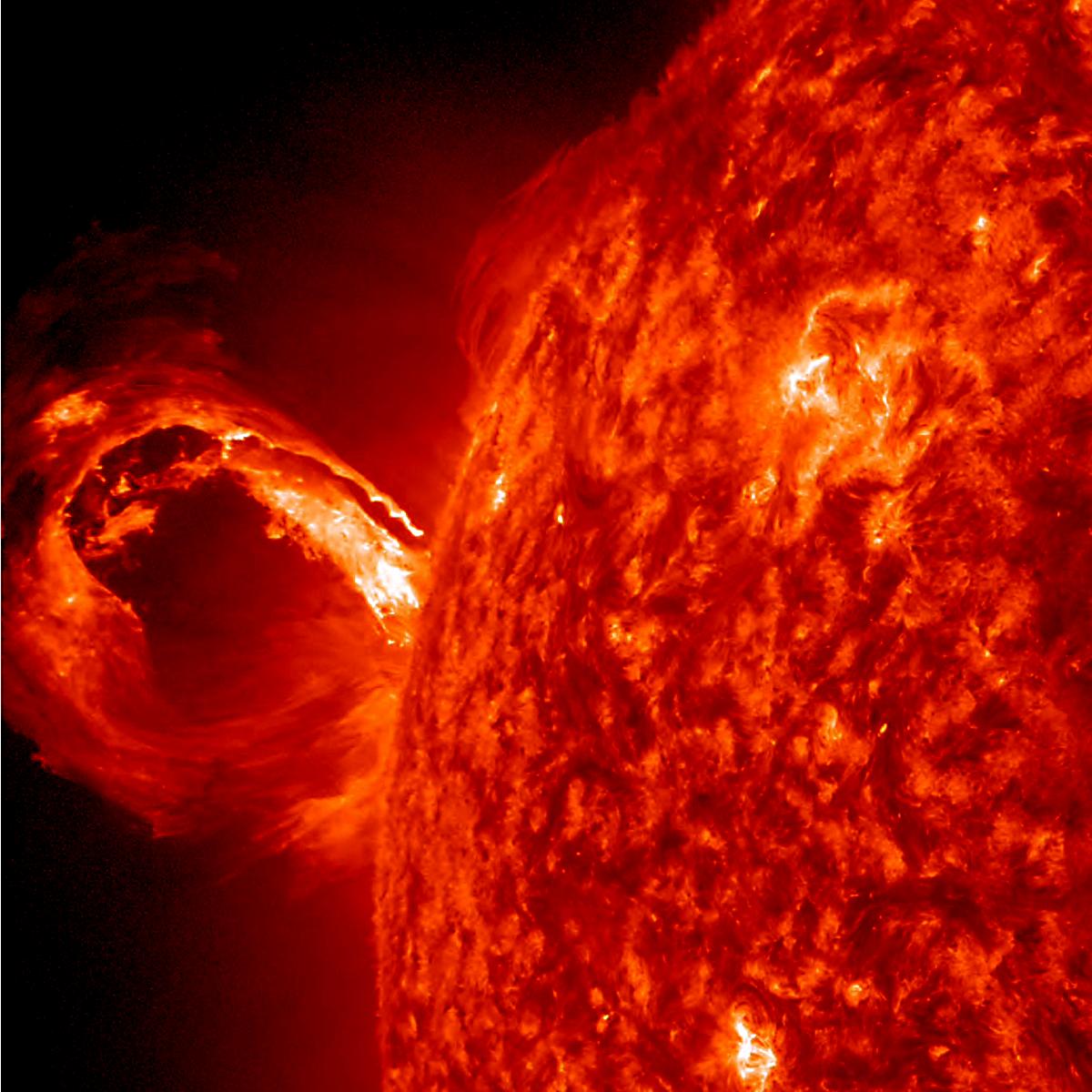WVU Today
West Virginia University physicists are uncovering secrets of the sun’s turbulent surface in the lab.
A new study featured on the cover of the March 2021 issue of Physics of Plasmas is the first published research from WVU’s PHASMA experiment in the Center for Kinetic Experiment, Theory and Integrated Computation Physics.
The PHAse Space MApping experiment, or PHASMA, is a one-of-a-kind facility that uses lasers to measure the speeds and positions of individual ions and electrons in a plasma. The combination of position and velocity information is called phase space.
“The lasers used in PHASMA hit the ions and electrons with light. Either particles absorb the light and send it back out, or it just bounces off of them,” said Earl Scime, the center’s director and Oleg D. Jefimenko Professor of Physics and Astronomy. “Either way, the light we measure is shifted in color by the motion of the particles, and that tells us their speed. For example, it is the same technique police use to measure the speed of cars on the highway with lasers or microwaves.”
This study investigated what happens inside a flowing tube of plasma when scientists increase the electrical current, which emulates processes on the sun. Plasma is the fourth state of matter and accounts for 99 percent of all visible matter in the universe.
“Consistent with theory, when the current passes a critical level, the entire tube of plasma kinks as an instability grows, creating a corkscrew-like shape,” Scime said. “Now that we know how to create this kinking behavior, we can use it to our advantage in studies of space phenomena such as magnetic reconnection — a process in which energy stored in the magnetic fields in a plasma is converted into heat and flow. This is what happens in large-scale events on the sun.”
The findings in this paper confirmed how much current in a plasma made of argon gas is needed to create the helix-shaped instability, a first in plasma physics.
“This paper was our first attempt to make these tubes of plasma in argon gas, which had not been done before with our style of plasma guns, and see if the instability threshold matched the predictions of theorists — which it does. Because we also measured the temperature of the plasma with our lasers and were able to identify new waves in the plasma after the kink begins, this work established that our facility works as designed and has the capability to make new discoveries,” Scime said. “It was an exciting paper for us because it lays the groundwork for a lot of what we are going to do in the future.”
PHASMA is the only facility in the world capable of making three-dimensional measurements of ion and electron motion at extremely small scales, referred to in plasma physics as the kinetic scale. This research could lead the way toward important advances in our understanding of space weather, magnetically confined fusion and astrophysical plasmas.
“One of the exciting things in science during the last several years has been the ability to make more and more detailed calculations. Historically, our field has dealt with things on a large scale. We don’t look at individual particles. We look at their average speed and average density and treat plasmas like one large magnetized fluid,” Scime said. “As our ability to make more precise measurements and computationally model systems has improved, plasma physicists have started exploring in detail these systems on much smaller scales. Our experiments are really trying to push those limits.”
Construction of PHASMA was funded through a 2019 National Science Foundation Major Research Instrumentation grant and is supported by additional funding from NSF, Department of Energy and NASA.
While PHASMA’s vacuum chamber is nearly five meters long, the researchers are taking measurements at scales smaller than a millimeter. This contrast reflects the incredible range of scales — from large to small — needed when attempting to simulate and investigate space phenomena in a lab setting.
“The PHASMA facility has developed unique tools to conduct these experiments,” said postdoctoral fellow Peiyun Shi. “By using lasers to measure the particle motion in all three dimensions, you can observe the small-scale physics without perturbing the plasma with physical probes.”
Since its establishment in July 2019, the center has grown to include seven faculty, three postdoctoral fellows, more than 12 graduate students and five undergraduate students. For example, Professor of Physics Paul Cassak is leading computational studies using the data collected by PHASMA.
“I am really fortunate to get the chance to work with the PHASMA experiment. It uses some of the most unique devices in the world. We can understand how the dynamics of the electrons, ions and neutral atoms affect physical processes that play key roles in solar, magnetospheric and astrophysical plasmas,” said postdoctoral fellow Prabhakar Srivastav. “This experiment giving us a chance to explore important physics issues with diagnostics that are unavailable anywhere else in the world. We hope to make great strides in understanding of what is happening on the sun’s surface in the next few years.”
TWEET @DominionPostWV




